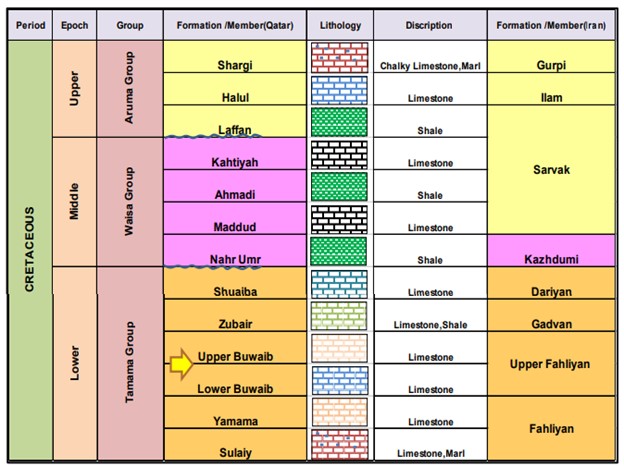
Класс Месторождения: Уникальное
Тип Месторождения: Нефтегазоконденсатное
Местоположение:
Местность:
Стадия разработки: Добыча
Год открытия: 1965
Источник информации:
Метод открытия:
Площадь: 88.44 км²
Salman Field
The Salman Field (former Sassan) is an oval-shaped dome structure located 142 kilometers in south of Lavan Island in the Persian Gulf (Figure 1). The Salman structure certainly is the result of salt tectonic. In geophysical maps, presence of faults was detected on the central parts of the structure.
The field straddles the international border line and is shared between Iran and Abu Dhabi. About 3/4 of the field is within the Iranian border and 1/4 of the field falls in to Abu Dhabi territorial waters which is named Abu Al Bukhoosh (ABK). Oil was discovered by LAPCO in 1965 by drilling the exploration well 2S-1. Tests in the lower Cretaceous Buwaib Formation and the Upper Jurassic Surmeh Formation showed commercial oil. Commercial gas accumulation in Kangan/Dalan and Faraghan Formations was also proved by drilling wells 2SK-1 in 1993 and 2SKD-1 in 2002. The structure of the gas bearing reservoirs is almost circular dome, approximately 19 km in diameter, and the vertical closure is over 470 m.
The stratigraphical nomenclature in the Salman field generally follows that used in Umm Shaif Field, which situated in 29 Km to the southeast. The total Cretaceous interval in the Salman is 160 ft thinner compared to Umm Shaif. Using gross divisions the upper Cretaceous Aruma dolomites and limestone are almost identical at both locations with 160 ft. The Lower cretaceous section is quite similar to that at Umm Shaif. In the middle portion of this zone (Buwaib formation) which suggests that accumulation is properly a function of varying porosity development. The Buwaib carbonates of Salman Field are situated near this locality. Lithologically, the studied formation resembles the Gadvan Formation but its facies types and fossil assemblages (biozones) are similar to the Fahliyan or Yamama carbonates. In the Salman Field, it seems that the Buwaib Formation is a transitional unit between the shale-dominated Gadvan and Fahliyan formations.The lower cretaceous Thamam Group (Buwaib Formation) tested 33 degree API. The Stratigraphy chart of the Persian Gulf and Stratigraphy and Lithology description chart of Salman field illustrates in Figure 1.

Figure 1. Lithostratigraphic chart of cretaceous units in the Persian Gulf
Source of information: Reservoir Characterization of Carbonate in Low Resistivity Pays Zones in the Buwaib Formation, Persian Gulf. Bita Arbab, Davood Jahani, Bahram Movahed. Open Journal of Geology, 2017, 7, 1441-1451.
Следующее Месторождение: Bakr 1